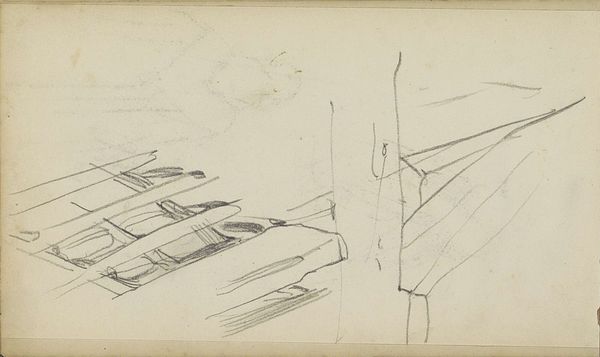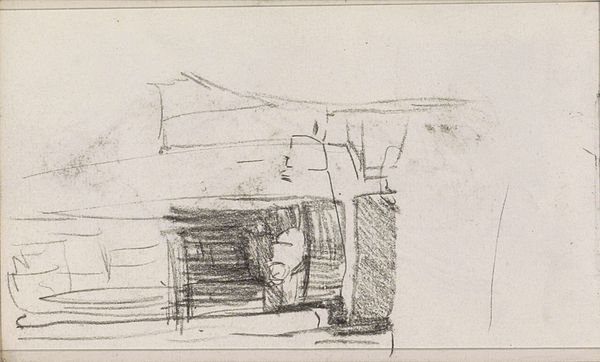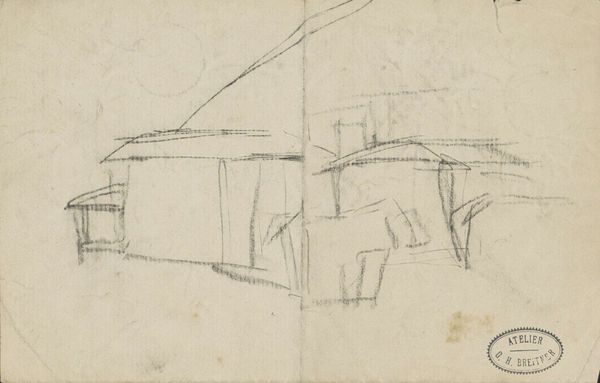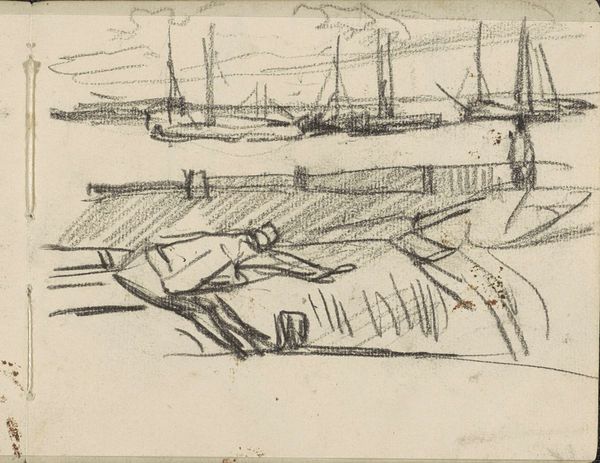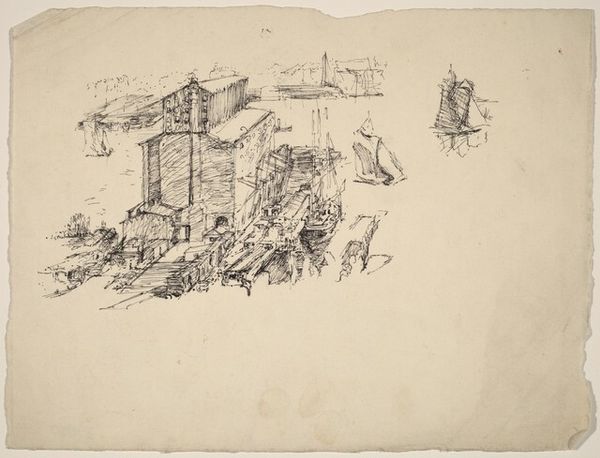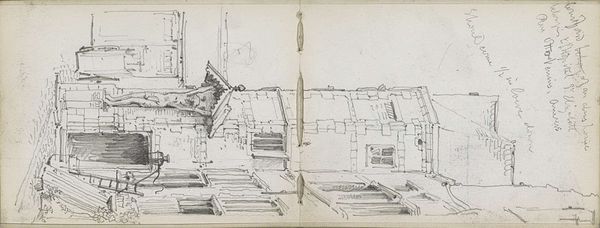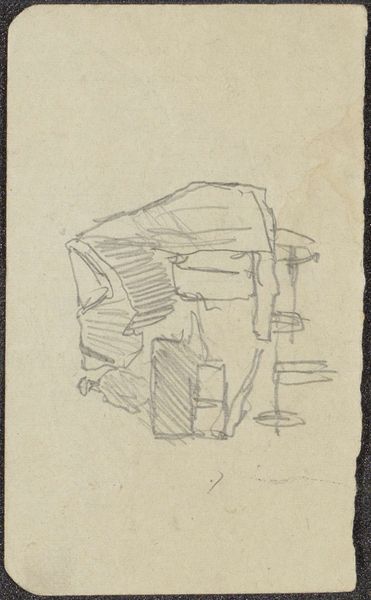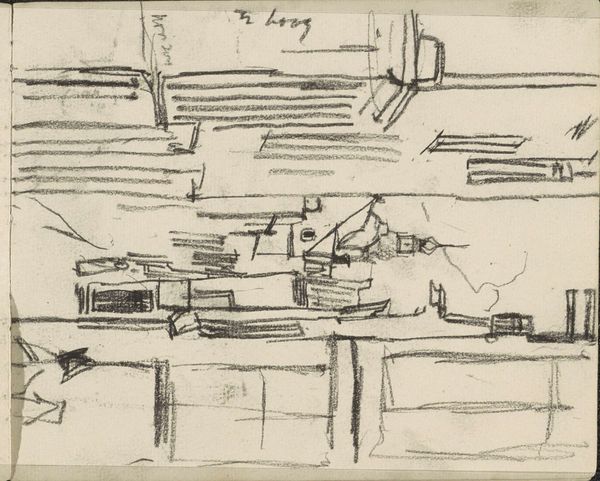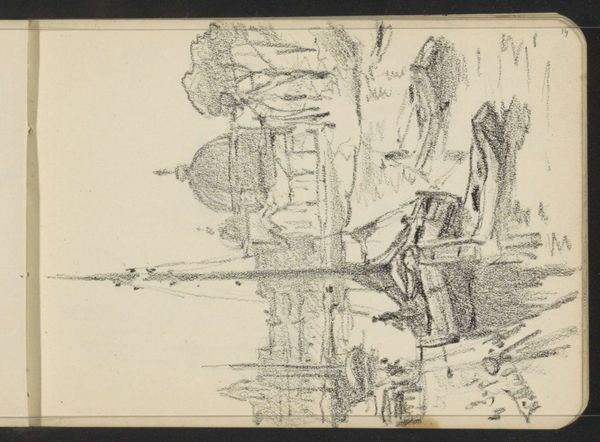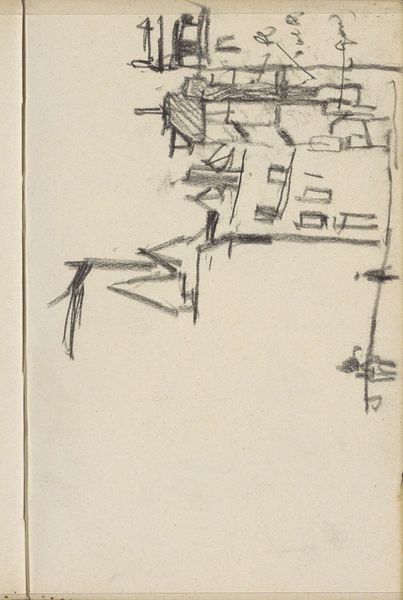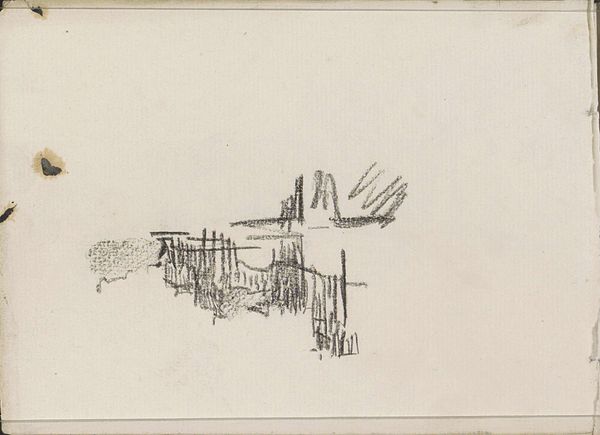
Copyright: Rijks Museum: Open Domain
Editor: So, this is 'Studieblad met knielende wasvrouwen,' or 'Study Sheet with Kneeling Washerwomen,' by Johan Antonie de Jonge, made around 1909. It’s a graphite and pencil drawing. The immediate feeling I get is one of hardship and labor. What do you see in this sketch? Curator: It captures a scene of strenuous physical labor, but more than that, it’s a symbol of women's work throughout history. Consider the pose, the bent backs. It’s almost biblical in its resonance. Washing clothes by hand was a communal activity, but it was also isolating. Do you sense that duality here? Editor: I do. There's a sense of figures working together, maybe telling stories, but they are also anonymous and very much alone in their toil. Almost like cogs in a larger machine of societal labor. The figures are close, but without much detail. Are these women specific people or types? Curator: I think de Jonge is interested in archetypes more than portraits. The poses themselves – the kneeling, the bending, the wringing – have been repeated countless times. In art history and in lived history. It's about the endurance of a type of labor, isn't it? A cultural memory. Look at how the composition guides your eye; what story does the visual rhythm tell you? Editor: The darker shaded areas really pull my attention and almost convey the heavy weight these figures are holding, contrasting the lighter areas to draw emphasis to the figures and labor. What a heavy topic captured so elegantly in a simple sketch. Curator: Indeed. This piece makes me appreciate the cultural weight images can carry. How everyday actions, repeated and represented, become powerful symbols.
Comments
No comments
Be the first to comment and join the conversation on the ultimate creative platform.
